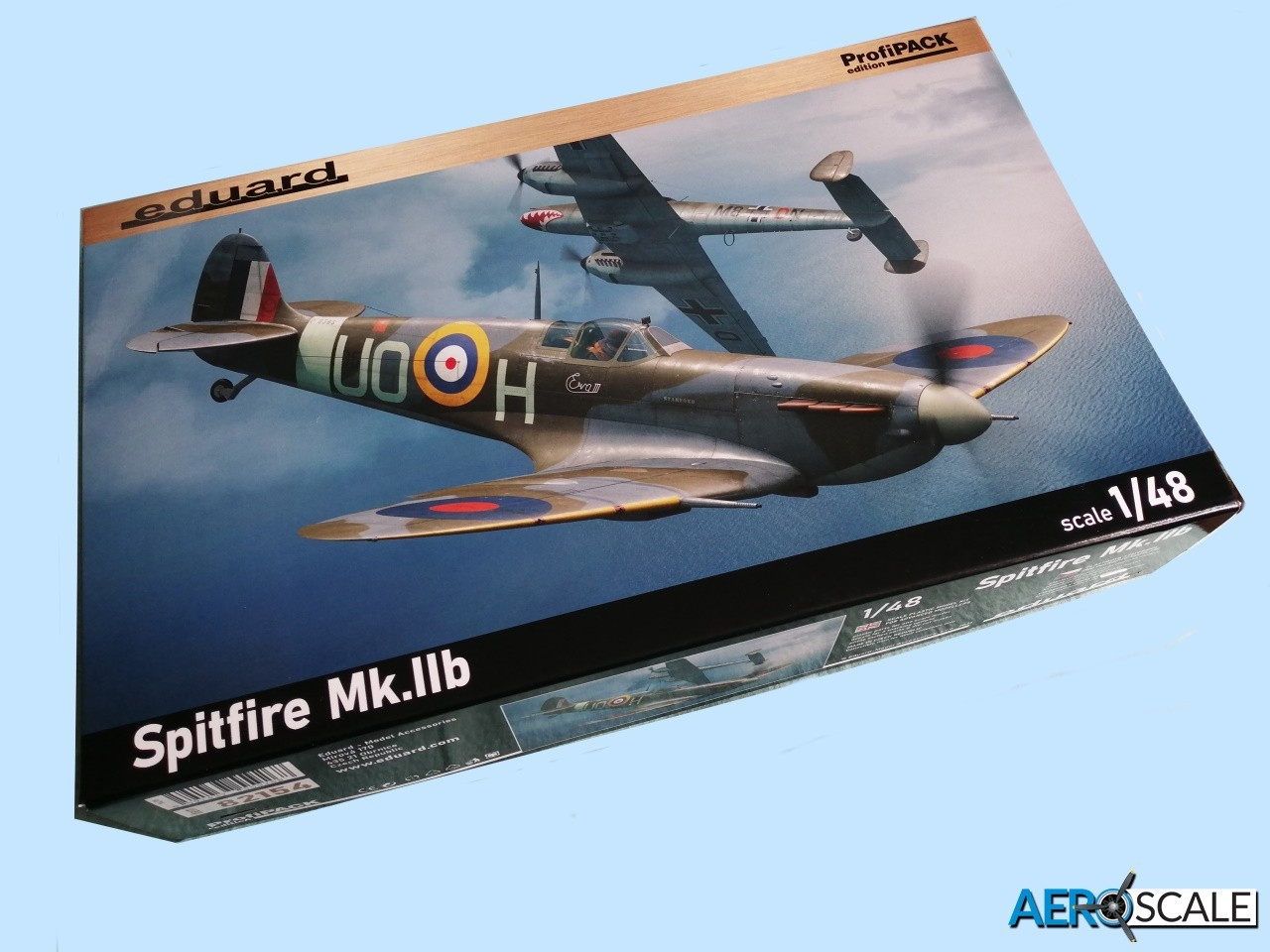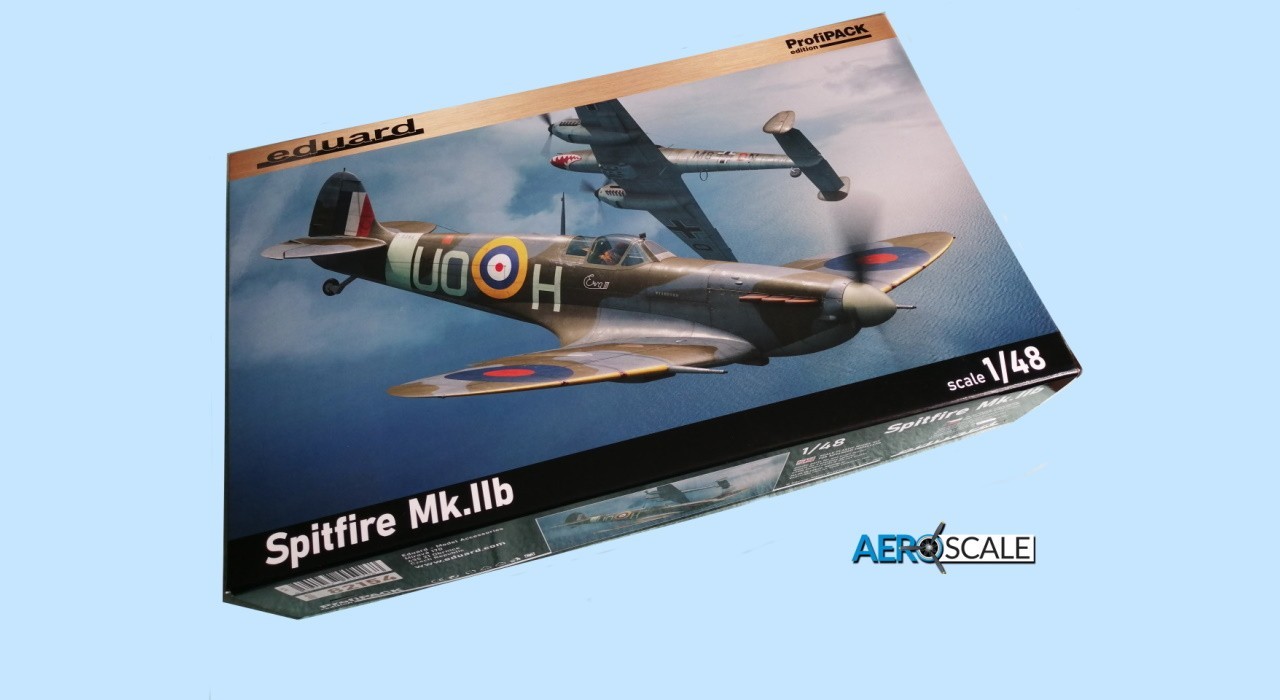
Background
The Spitfire Mk.II incorporated all of the improvements fitted on the Mk.I in production and during service. Its introduction was at a time when high volume aircraft manufacturing facilities was being introduced. The first few Mk.II’s were produced at the Castle Bromwich, Birmingham factory. Ten Mk.II’s were produced in June, twenty seven were produced in July, thirty seven in August and production was up to fifty seven in September.

The Spitfire Mk.II was a Mk.I airframe but powered by the more powerful 100 Octane fuelled Merlin XII. A small fairing on the right side of the nose, immediately behind the propeller was the location of the factory fitted cartridge starter. The Merlin XII was equipped with a motor driven hydraulic pump that retracted the landing gear, so all Mk.IIs abandoned the manual system with the associated large lever. Mk.IIs came out of the factory with full armour protection, including the windscreen, and had rear view mirrors. The laminate seat was feature exclusive to the Mk II. Four of the eight 7.7mm Browning machine guns were replaced by two 20mm Hispano-Suiza canons. The G.42B camera was fitted to record gun kills. The first MK.II’s were fitted with TR.9D shortwave radios, but these were quickly replaced by TR.1133 VKV units.The latter were characterized by the absence of the aerial wire from the mast behind the cockpit. Another standard feature involved the installation of the IFF system, and this included the aerial wires that led from the fuselage side to the leading edges of the horizontal stabilizers. Significant was the installation of the automatic Rotol RX5 propeller in the form of the RX5/1 [metal] or the RX5/3 [wood]. Some Mk.IIb were equipped with a De Havilland5/39A propeller.
The installation of the canon gave the Mk.IIb a greater chance of bring down bombers. It would also be a highly effective weapon in the ground attack role for offensive sweeps across northern France. A few Mk.II's were subsequently converted to Mk.V standard with the installation of the Merlin 45.
The Kit
Eduard continue the early Spitfire narrative with this release of this canon armed quarter scale Spitfire Mk.IIb ProfiPACK. If you have Eduard’s Spitfire Mk.IIa then a lot of the features of this kit will be familiar. One significant difference is the new wing incorporating additional tear shaped blisters above and below the wings for the canons. As with all recent Eduard releases the first thing that draws the eye is the wealth of subtle and consistent recessed and raised detail. You can see a difference between the fasteners and the rivets, even the piano hinges are reproduced on the lower wing access panels and radio hatch. The forward fuselage features the slightly raised armour plating around the fuel tank and a couple of air scoops just by the windscreen. Another feature is how fine the attachment points of the parts are to the sprues.
There are quite a few plastic and PE parts to detail the cockpit. Eduard has decided to create the cockpit as a separate part. Attention to detail is excellent and includes the full-length Sutton seat harness extending back into the fuselage. The seat has an optional plastic flare rack,although there is a PE flare rack if you want a slightly more detailed item.The control stick is made up of a number of plastic parts including a PE part.Oddly the instructions show the fitting of the landing gear pump handle fitted to the Spitfire Mk.I. The Spitfire Mk.II had a hydraulic pump that operated the main gear. So, you might want to omit this part. The instrument panel [IP] can be done using the pre-coloured photo etched parts, plastic or decal. There are three small sets of decals for the IP. There is some intricate work needed to install the PE hinge for the cockpit door, but a worthwhile one if you’re displaying the door open.
You can display the canopy open or closed. The open option has two parts and the closed has just the one, the canopy is moulded onto the rearmost clear part. Eduard has thoughtfully included the clear knock out panel on the port side canopy. There is also an internally fitted mirror [PE] to attach to the canopy.
The fuselage halves are split left and right and are pretty much entire. The only things to add is the one-piece rudder, panelling under the nose and the access door for the cockpit. The rudder is separate and one piece, though you need to remove the aerial attachment point seen on the Mk.I. There are locating pins and holes to aid with the alignment of the two fuselage halves. A third of the wing fillet from the leading edge is separate. If you want to cut out the radio access hatch then Eduard has engineered a hatch demarcation line on the inside of the port fuselage. There is some internal detail for the cockpit just belowt he sill, but bear in mind the majority of the detail is in the separate cockpit assembly. The prop for all six marking options is the slightly less pointed spinner of the de Havilland 5/39A constant speed propeller. The propeller blades are one piece and the spinner is made up from two parts. The one-piece exhausts for the Merlin XII have a slight bit of shrinkage. There’s a decent amount of depth at the end of the exhausts to convincingly make them look pipe like.
As mentioned this is a new wing featuring the canon blisters. Four of the Brownings machine guns was retained. The almost full span lower wing features separate wing tips. The ailerons are separate and the flaps are in the raised position. The box shaped radiator under the starboard wing is made up from seven plastic parts including two choices of actuator to display the flap open or closed. There are three additional plastic part representing the plumbing. PE radiator faces are included for both the underwing radiator and oil cooler. Thankfully the canons are not inserts that form part of the leading edge as seen on the Hawker Tempest. The four machine gun barrels are included if you want to show them, though you may want to punch holes in the decals representing the fabric gun port covers. The undercarriage bays are made up from thirteen parts and features the main spar. The subtle rivet detail on the walls of the undercarriage bay is worth noting. The gear down indicators on the upper surface are PE parts and couple of holes need drilling to fit them.
The horizontal tail surfaces are each made up from two parts, though the two elevators are one piece. The tail control surfaces don’t look positionable, but I’m pretty sure with you can cagoule them a little. Care is needed joining the control surfaces on the tail as there seems to be a sequence to follow.
The tyres are devoid of any weighting, though the separate hubs are well detailed. The head on view of the ‘Spit’ in the instructions provides guidance on how to set the oleos and wheels. There’s a choice of a one piece or three-piece tail wheel, there is no paint mask for the separate tail wheel.
The majority of the pre-coloured photo etched parts detail the cockpit.
There are paint masks for the outside of the windscreen and canopy. Also included are masks for the hubs, although the parts number on the mask instructions is wrong. There are masks for the single ID light under the fuselage and the gun sight.
The six marking options include:
- P/O Frederick A.O Gaze, No.610 [County of Chester]Squadron, RAF Westhampnett, West Sussex, England, June 1941.
- P8519, No.306 [Polish] Squadron, RAF Northolt, England,July 1941.
- P8646, No.616 [South Yorkshire] Squadron, RAF Kirton inLindsey, Lincolnshire, England, October/November 1941.
- P8505, Sgt. Eric S.Cicks-Sherwood, No.266 [Rhodesia]Squadron, RAF Wittering, Cambridgeshire, England, September 1941.
- P8533, S/Ldr. Percival S. Turner, CO No.145 Squadron, RAFCatterick, North Yorkshire, England, October 1941.
- P8348, No.52 OTU, RAF Debden, Essex, England, Summer1943.
There are a couple of options [A and B] in dark green/dark earth and sky, the rest are dark green/ocean grey and medium sea grey.
Decals are printed by Eduard and on past performance they have always performed well. There are two sheets one with roundels, fin flashes and markings and the other sheet has stencils and wing walkways. There is quite a bit of carrier film around the lettering of the markings
Instruction comprises of a twenty-page A4 booklet. The illustrations to aid construction couldn’t be clearer. You will find a full colour painting and marking guide included as well as a page is devoted to applying the stencils.
Conclusion
With the new canon wing Eduards 1:48 scale Spitfire Mk.IIb marks a new chapter in the development of this iconic aircraft. The clean and beautiful looking airframe evolving to take on the air of a in service fighter. Eduard has done a great job of replicating the Mk.IIb particularly coming up with a completely new wing.
82154 – Supermarine Spitfire Mk. IIb – 1:48
Our thanks to Eduard for the review sample
Please remember, when contacting retailers or manufacturers, to mention that you saw their products highlighted here – on AEROSCALE.

